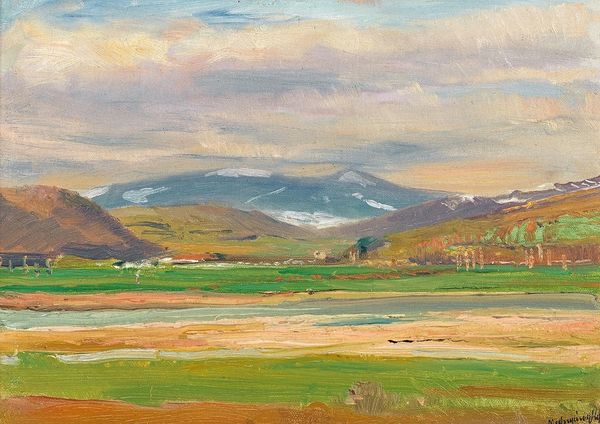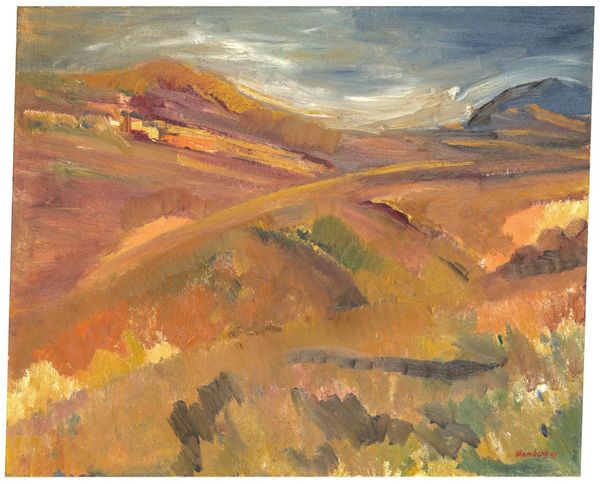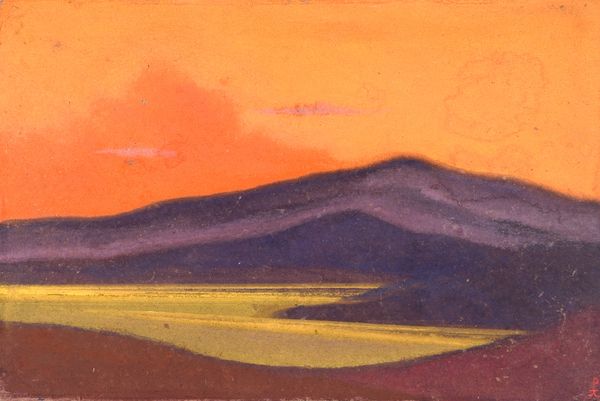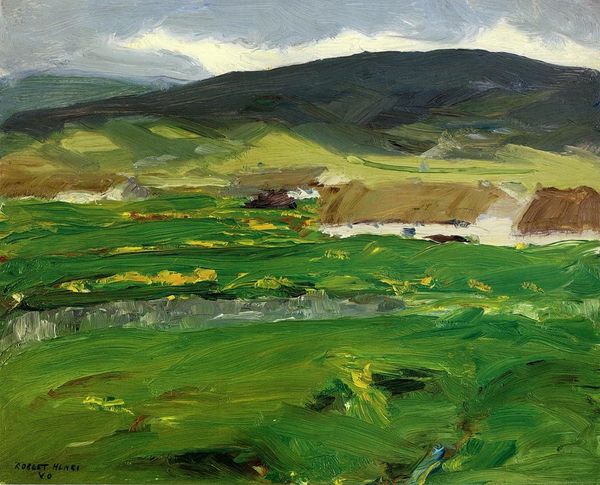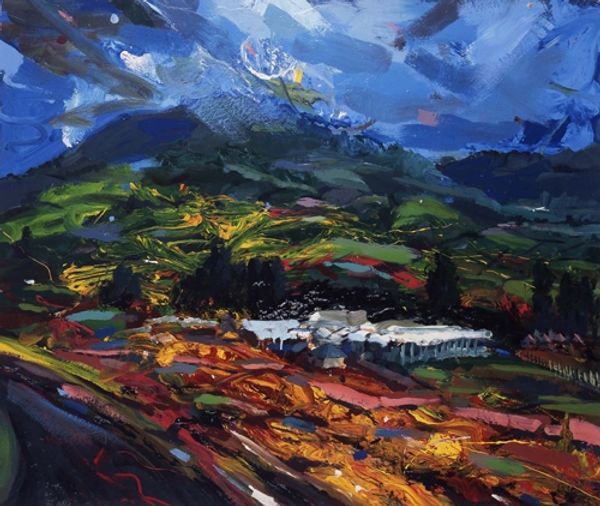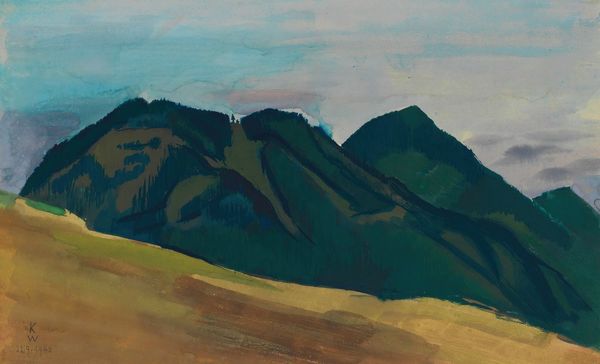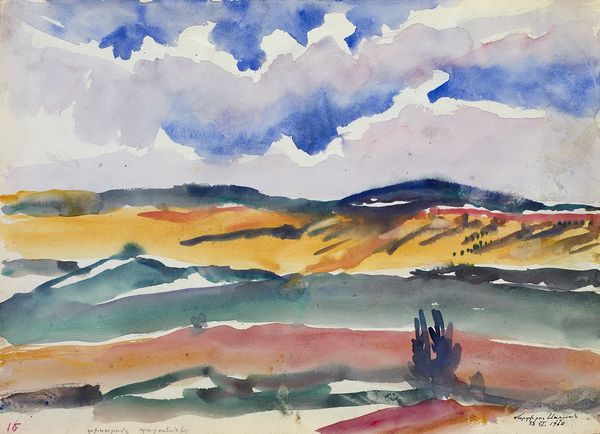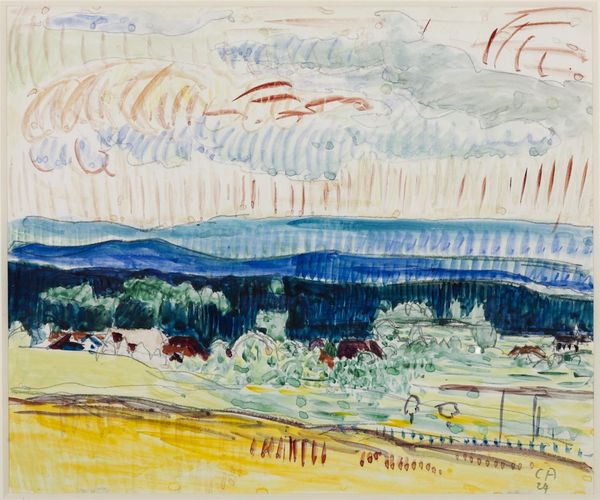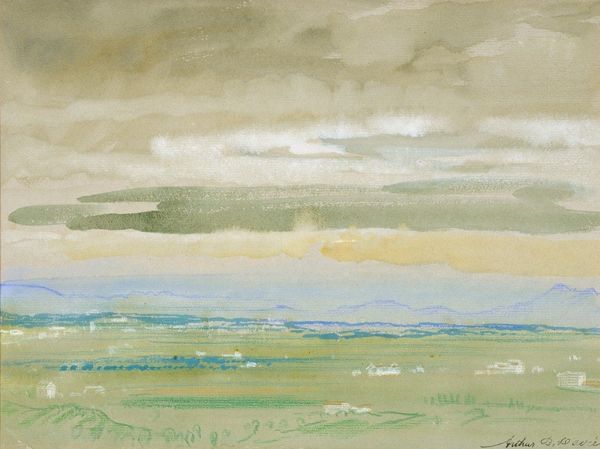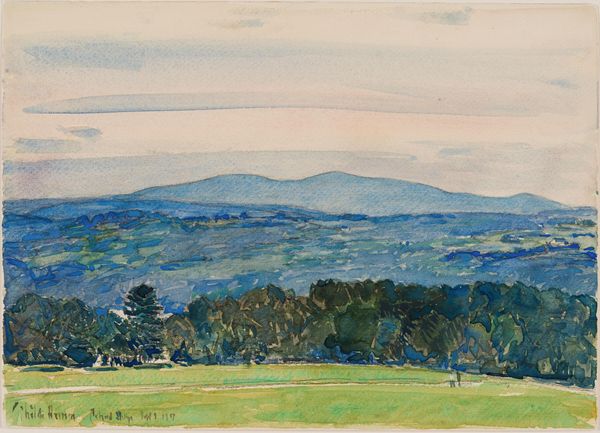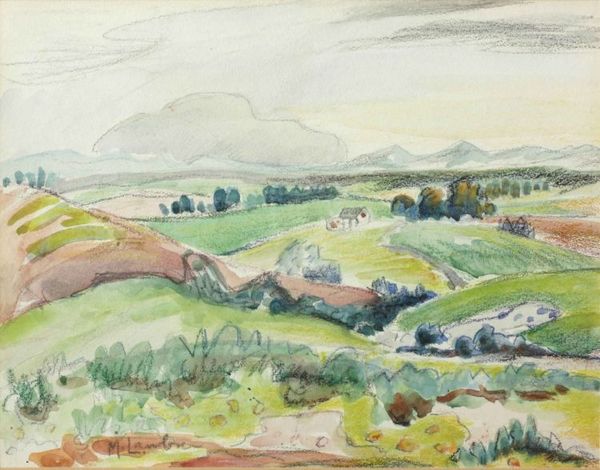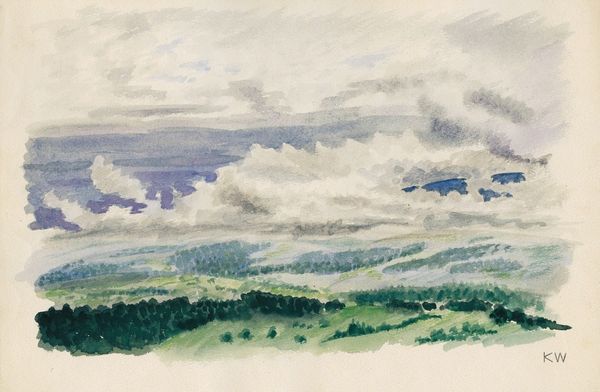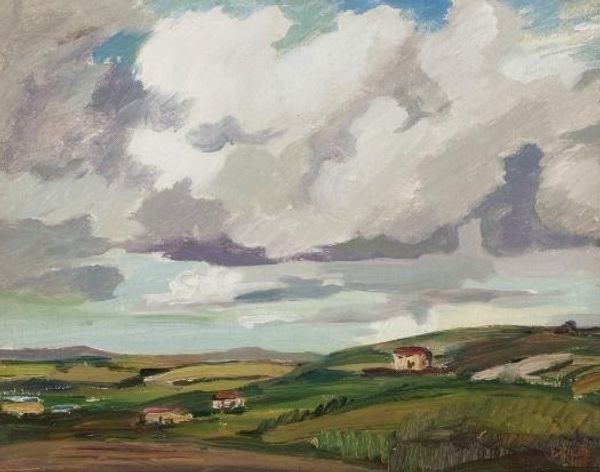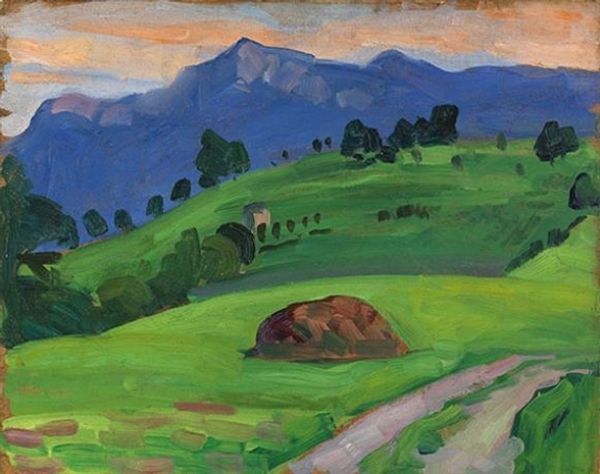
#
abstract expressionism
#
sky
#
cliff
#
abstract painting
#
impressionist landscape
#
possibly oil pastel
#
oil painting
#
rock
#
fluid art
#
neo expressionist
#
acrylic on canvas
#
mountain
#
paint stroke
#
expressionist
Copyright: Martiros Sarian,Fair Use
Editor: So, this is "Ashtarak in hazy day" by Martiros Sarian, painted in 1954. It looks like it's oil on canvas, and I’m struck by how tactile the brushstrokes are; you can almost feel the texture of the landscape. What’s your take on it? Curator: From a materialist perspective, this work intrigues me. The visible brushstrokes you mentioned highlight the physical act of painting. Notice how Sarian hasn’t tried to disguise the materiality of the paint. He’s using it to construct the landscape. Think about what oil paint meant at this time – a mass produced item enabling art production and how that changes our perception of "art." Editor: I see what you mean. The thickness of the paint is almost sculptural. What about the social context of landscape painting at the time? Curator: Absolutely crucial. Consider the role of landscape in Soviet art. Often, landscapes were used to celebrate the productivity and prosperity of the land, linking to the socialist ideal of collective labor and resource management. Sarian's “Ashtarak in hazy day”, while depicting a rural scene, seems less about celebrating Soviet progress and more about the pure experience of place. How does the materiality of paint help to highlight this individual, sensory experience? Editor: Perhaps the rough, unblended brushstrokes emphasize the physical act of seeing and feeling the landscape, making it less of an idealized representation and more of a direct encounter? Curator: Precisely. It’s less about propaganda, more about a lived experience expressed through a specific medium. This tension between the materials, the artist’s labor, and the political expectations, is where the real interest of the work lies. Editor: That makes so much more sense now. I hadn't considered the tension between the medium and the expected subject matter of Soviet landscapes. Curator: Seeing the artwork through the lens of materials, production and social context opens a richer understanding of the artistic intention and potential societal impact, don’t you think? Editor: Yes, it's fascinating how the tangible aspects of a painting can tell such a complex story about art, labour and even politics. Thanks!
Comments
No comments
Be the first to comment and join the conversation on the ultimate creative platform.
